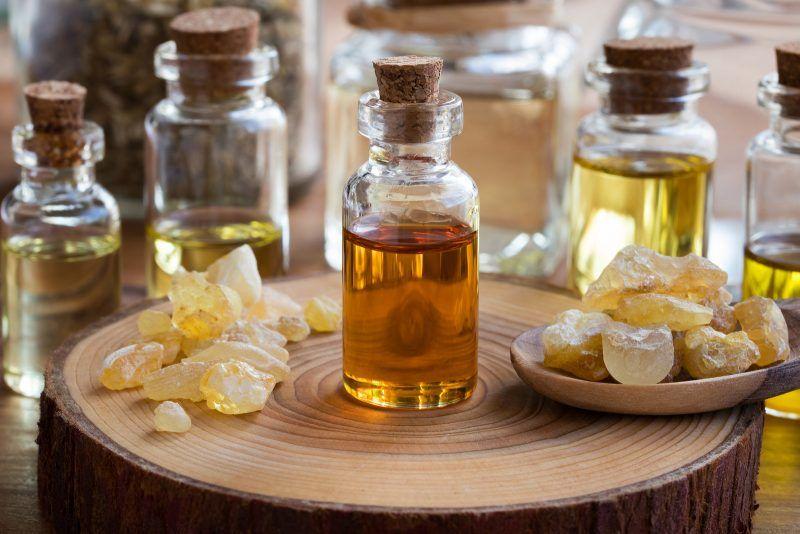History and Origin of Frankincense Extracts
Frankincense Extracts has been cherished for thousands of years across many ancient civilizations. Originating from trees of the Boswellia genus found in tropical and subtropical parts of the Arabian Peninsula, parts of Africa, and India, frankincense was highly valued by the ancient Egyptians, Babylonians, Assyrians, and Phoenicians for its aromatic and medicinal properties. During the time of ancient Greece and Rome as well, frankincense was an important trade commodity and was even used as a form of currency at times. Extraction of resin from the bark of Boswellia trees by tapping or scratching was a significant part of life and livelihood for communities living in regions where these trees grew naturally. The Biblical mentions of frankincense presented to the infant Jesus also highlighted its prominence even in religious traditions.
Composition and Therapeutic Benefits
Modern science has revealed that frankincense is rich in bioactive compounds like triterpenoids, sesquiterpenes, diterpenes, polysaccharides, and other essential oils that contribute to its diverse healing effects. Some of the main therapeutic constituents in gum olibanum are boswellic acids such as 11-keto-β-boswellic acid (KBA), acetyl-11-keto-β-boswellic acid (AKBA), and 3-O-acetyl-11-keto-β-boswellic acid (OA-KBA). These boswellic acids have powerful anti-inflammatory properties and help reduce inflammation by inhibiting the 5-lipoxygenase (5-LOX) and cyclooxygenase (COX) pathways. This makes gum olibanum useful in managing various inflammatory conditions like arthritis, colitis, asthma, muscle pain, and more.
Moreover, these Frankincense Extracts have been shown to induce apoptosis in cancer cells, especially against cancers of the breast, prostate, pancreas, and skin. The essential oils in frankincense also exert antibacterial, antifungal, and antiviral effects. Clinical research indicates its effectiveness in supporting immune function, enhancing digestive health and metabolism, improving cognitive abilities, and promoting overall well-being. Being non-toxic and well-tolerated in recommended amounts, gum olibanum provide a safe alternative or adjunct to conventional drugs for certain health issues.
Various Types of Gum olibanum and Their Applications
Depending on the part of the Boswellia tree used and manufacturing process involved, different types of gum olibanum are available which have distinct applications:
Gum Resin Extract: Derived from the hardened gum resin (oleoresin) of the Boswellia tree, this extract is the most commonly available form in the market. It contains boswellic acids as the principal therapeutically active constituents. As an anti-inflammatory and immunity-boosting supplement, it is used for arthritis, digestive issues, skin care, respiratory disorders, and more.
Olibanum Extract: This is extracted from the dried incense of the Boswellia tree. It has antibacterial, antifungal and cell-protective properties. Commonly used in natural cosmetics and skin care products, it helps treat skin conditions like acne, eczema, psoriasis and aging signs.
Seed Oil Extract: Developed from the seeds of Boswellia trees, it contains therapeutic fatty acids and neutral lipids in high concentration. Valuable as a natural pain reliever and muscle relaxant, it efficiently eases joint and muscle pain. Useful in sports medicine as well as for managing arthritis and back pain.
Leaf Extract: Rich in antioxidant and anti-inflammatory compound alpha-boswellic acid and flavonoids like glycosides, tannins and terpenoids. Shows great potential as a memory booster and for treating neurodegenerative conditions. Research indicates it may help prevent cognitive decline and Alzheimer's disease.
Root Extract: Made from the roots of Boswellia trees, it displays antimicrobial, anticancer and liver-protecting properties. Very effective against infectious diseases and may help tackle hepatitis, jaundice and other liver disorders when taken in proper dosage.
Standardization and Dosage
For consistency and predictable benefits, quality gum olibanum are usually standardized to contain 30-65% boswellic acids and must be sourced from trusted suppliers. Normally a dosage of 100-300 mg once or twice daily is recommended as a general supplement. However, for treating specific ailments, the suitable dosage depends on various factors and should be determined according to the advice of an expert healthcare provider. It is always advisable to start with a low dosage and adjust it gradually based on individual tolerance and response.
In Summary, with a long history of safe traditional use and mounting research evidence, gum olibanum from the Boswellia tree have emerged as an excellent alternative to pharmaceutical drugs for managing inflammation, pain, infections, neurological disorders and even cancer. Being natural and multi-targeted in action, they provide broad-spectrum healing benefits along with antioxidant, immunomodulatory and cell-protective effects. Modern lifestyle stresses demand functional supplements and gum olibanum deliver exactly that by supporting health from within. Their applications continue to expand as new properties are uncovered through ongoing scientific investigations.
For Deeper Insights, Find the Report in the Language that You want:
About Author:
Priya Pandey is a dynamic and passionate editor with over three years of expertise in content editing and proofreading. Holding a bachelor's degree in biotechnology, Priya has a knack for making the content engaging. Her diverse portfolio includes editing documents across different industries, including food and beverages, information and technology, healthcare, chemical and materials, etc. Priya's meticulous attention to detail and commitment to excellence make her an invaluable asset in the world of content creation and refinement.
(LinkedIn- https://www.linkedin.com/in/priya-pandey-8417a8173/)
